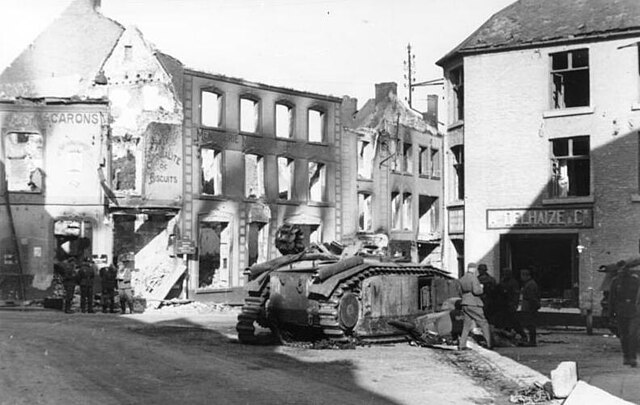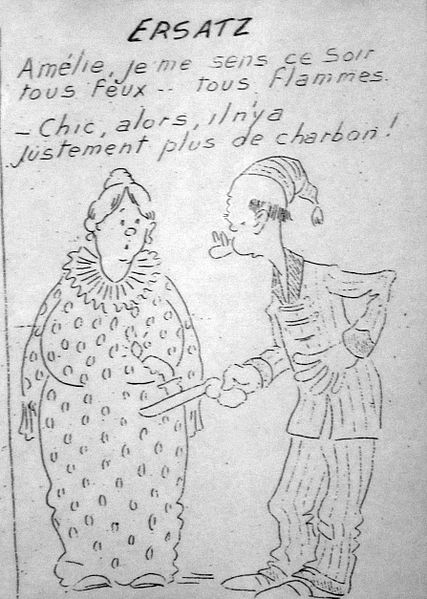The Belgian Resistance collectively refers to the resistance movements opposed to the German occupation of Belgium during World War II. Within Belgium, resistance was fragmented between many separate organizations, divided by region and political stances. The resistance included both men and women from both Walloon and Flemish parts of the country. Aside from sabotage of military infrastructure in the country and assassinations of collaborators, these groups also published large numbers of underground newspapers, gathered intelligence and maintained various escape networks that helped Allied airmen trapped behind enemy lines escape from German-occupied Europe.
Members of the Belgian resistance with a Canadian soldier in Bruges, September 1944
Examples of mimeograph machines used by the Belgian resistance to produce illegal newspapers and publications
Het Vrije Woord, a typical Dutch-language underground publication, October 1940 issue.
The entrance to Fort Breendonk where many captured members of the resistance were held
German occupation of Belgium during World War II
The German occupation of Belgium during World War II began on 28 May 1940, when the Belgian army surrendered to German forces, and lasted until Belgium's liberation by the Western Allies between September 1944 and February 1945. It was the second time in less than thirty years that Germany had occupied Belgium.
German cavalry parade past the Royal Palace in Brussels shortly after the invasion, May 1940
War damage in the Walloon town of Beaumont incurred during the fighting in May 1940
Leopold in 1934 after his accession to the throne
Contemporary cartoon satirising fuel shortages in occupied Belgium. The man is saying: "Amélie, I feel...all fired up" to which the woman replies "Great, because there isn't any more coal left".








